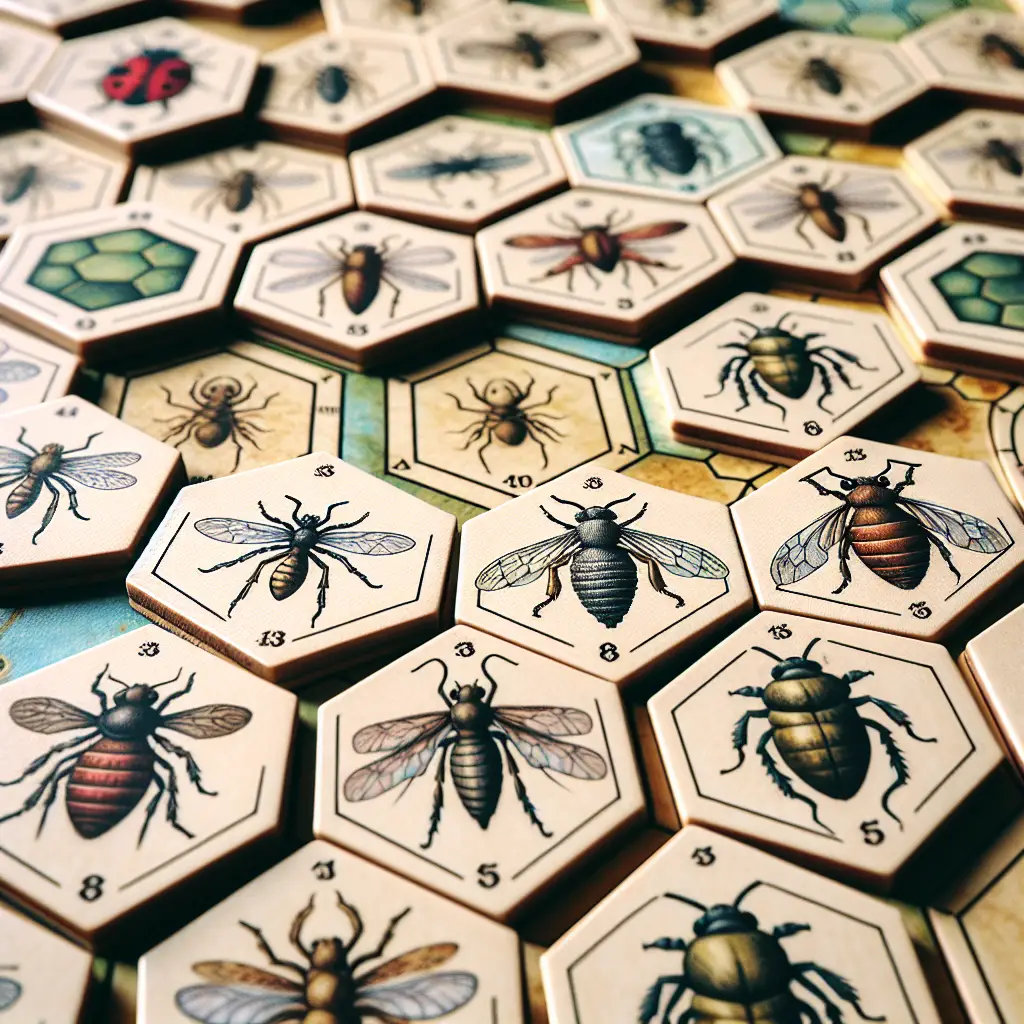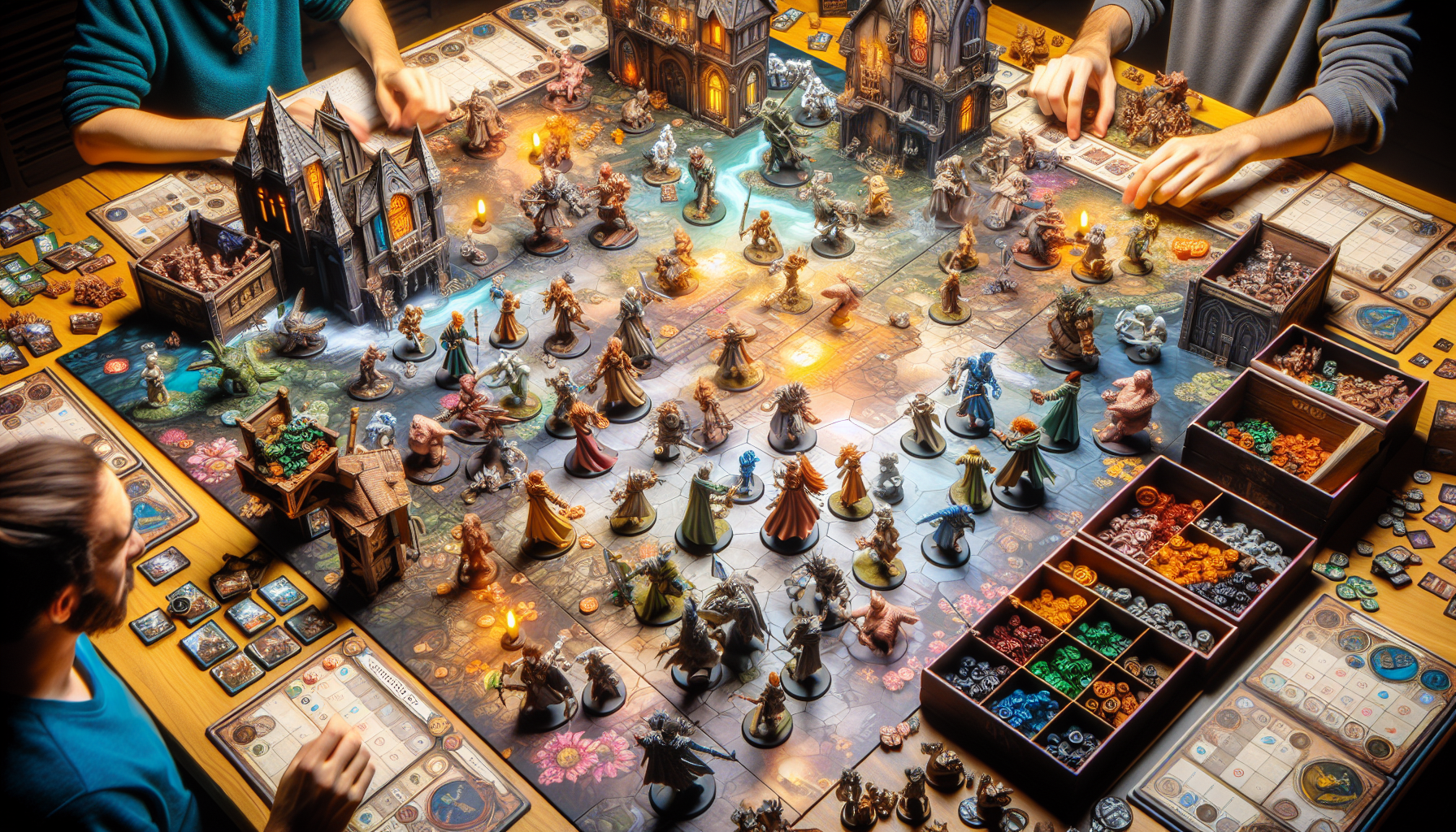Introduction
The board game Hive is a unique and challenging abstract strategy game that has gained a dedicated following among gamers worldwide. With its simple yet profound gameplay, Hive offers a captivating experience that tests your strategic thinking and spatial awareness. If you’re looking to improve your skills and increase your chances of winning, this comprehensive guide will provide you with valuable insights and strategies to help you master the game.
Understanding the Basics
Before delving into advanced strategies, it’s essential to have a solid grasp of the game’s fundamentals. Hive is played on a flat surface, and each player controls a swarm of hexagonal tiles representing different insects. The objective is to completely surround the opponent’s queen bee while protecting your own.
The game pieces, or insects, have unique movement patterns and abilities. The queen bee, for instance, can move one space in any direction, while the spider can move in a straight line as far as possible. Mastering the movement patterns and capabilities of each insect is crucial for developing effective strategies.
Controlling the Center
One of the most important strategies in Hive is controlling the center of the playing area. By occupying the central spaces, you can limit your opponent’s movement options and create a strong defensive position. However, it’s important to strike a balance between controlling the center and leaving enough room for your pieces to maneuver.
A common tactic is to start the game by placing your queen bee in the center, surrounded by other insects. This creates a solid foundation from which you can expand your influence and launch attacks. As the game progresses, you can reinforce your central position by adding more pieces or creating strategic barriers to restrict your opponent’s access.
Piece Placement and Mobility
Effective piece placement is crucial in Hive. Each move should be carefully considered, as it can have far-reaching consequences on the game’s outcome. When placing your pieces, consider not only their immediate impact but also their potential future movements and the opportunities they create for your other insects.
Mobility is another key factor to consider. While it’s important to control the center and create defensive structures, you should also strive to maintain flexibility and maneuverability for your pieces. This will allow you to adapt to your opponent’s moves and seize opportunities as they arise.
One strategy is to create pathways or corridors for your insects to move freely, allowing you to quickly shift your focus and launch attacks from different angles. Additionally, pay attention to the movement patterns of your opponent’s pieces and look for ways to restrict their mobility or create bottlenecks that limit their options.
Offensive and Defensive Strategies
Hive requires a delicate balance between offensive and defensive strategies. While the ultimate goal is to surround your opponent’s queen bee, you must also protect your own queen and maintain a strong defensive position.
Offensive Strategies:
- Pincer Movements: Use your pieces to create a pincer-like formation, gradually closing in on your opponent’s queen bee from multiple angles.
- Sacrificial Plays: In some situations, sacrificing a piece can open up new opportunities or force your opponent to make unfavorable moves.
- Swarming: Concentrate your forces in a specific area to overwhelm your opponent’s defenses and create a path to their queen bee.
Defensive Strategies:
- Fortification: Build a solid defensive structure around your queen bee, making it difficult for your opponent to penetrate.
- Counterattacks: While defending your queen, look for opportunities to launch counterattacks and disrupt your opponent’s plans.
- Piece Positioning: Strategically position your pieces to block potential paths and restrict your opponent’s movement options.
Endgame Tactics
The endgame in Hive can be intense and requires careful planning. As the game progresses and the board becomes more crowded, it’s essential to anticipate your opponent’s moves and plan ahead.
One effective endgame tactic is to create a “picket fence” formation, where your pieces are arranged in a line or semi-circle around your opponent’s queen bee. This can limit their movement options and force them into unfavorable positions.
Another strategy is to create “escape routes” for your queen bee. By leaving strategic gaps or pathways, you can ensure that your queen has a way to evade your opponent’s attempts to surround her, prolonging the game and potentially creating new opportunities.
It’s also important to be mindful of the game’s tie rules. If both players are unable to make a legal move, the game ends in a tie. In some situations, it may be advantageous to intentionally create a tie position, especially if you’re in a disadvantageous position.
Practice and Analysis
Like any strategy game, practice and analysis are essential for improving your skills in Hive. Play as many games as possible, against opponents of varying skill levels, to gain experience and exposure to different strategies and tactics.
After each game, take the time to analyze your moves and those of your opponent. Identify the pivotal moments where the game shifted in one direction or the other, and consider alternative moves or strategies that could have led to a different outcome.
Additionally, consider studying games played by experienced players or watching instructional videos and tutorials. These resources can provide valuable insights and help you develop a deeper understanding of the game’s nuances.
Conclusion
Winning at Hive requires a combination of strategic thinking, spatial awareness, and adaptability. By mastering the basics, controlling the center, effective piece placement and mobility, balancing offensive and defensive strategies, employing endgame tactics, and continuously practicing and analyzing your games, you can significantly improve your chances of success.
Remember, Hive is a game of subtlety and nuance, and every move can have far-reaching consequences. Embrace the challenge, enjoy the journey, and let your strategic prowess shine through as you navigate the intricate world of this captivating board game.
If you’re interested in learning more about Hive or exploring other board games, consider visiting our website at https://www.weareags.com. We are a company that manufactures board games for third parties, and we’re passionate about creating engaging and thought-provoking gaming experiences.






